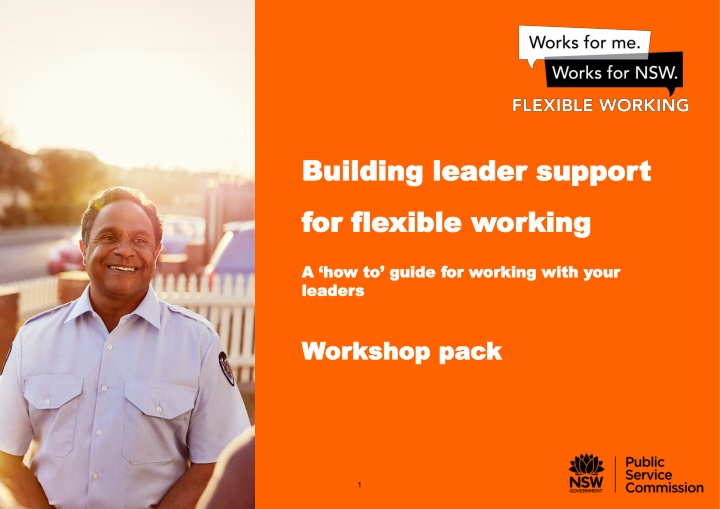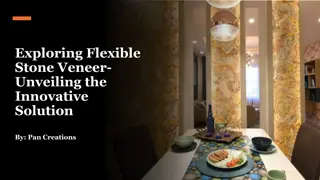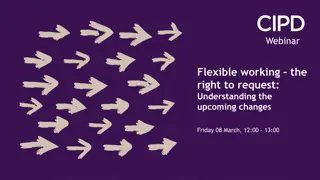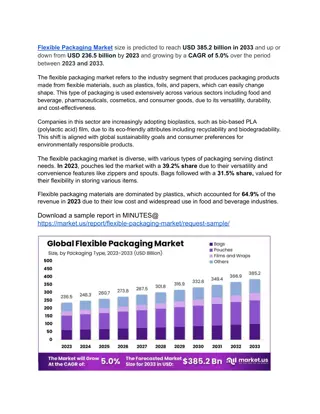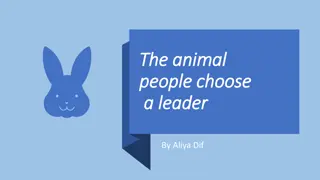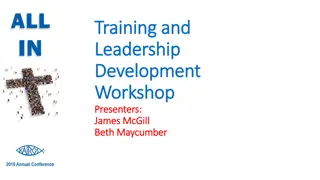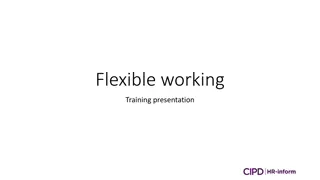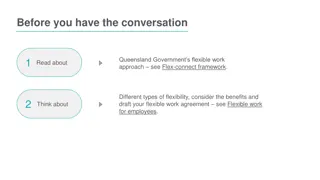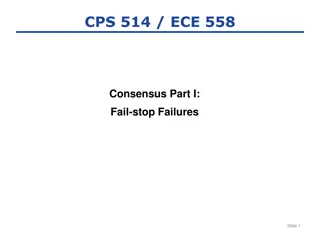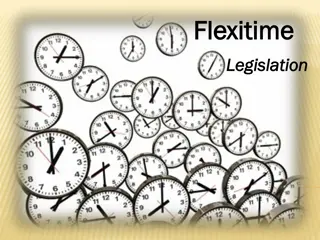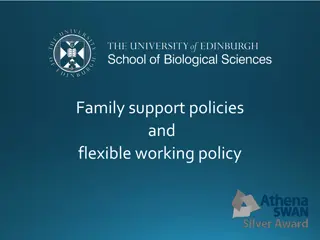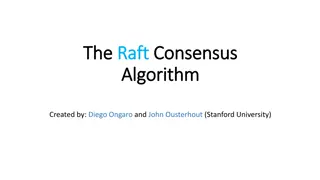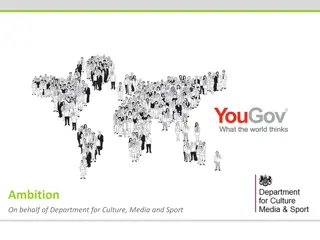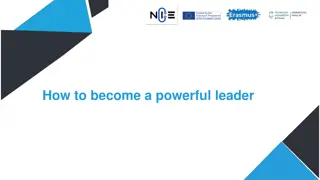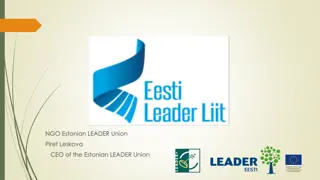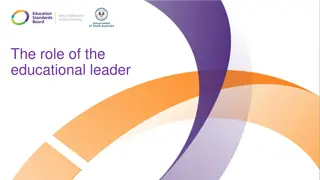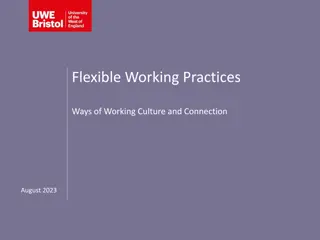Building Leader Support for Flexible Working Workshop Guide
This workshop guide provides resources to help agencies develop a vision for flexible working, prioritize objectives, implement organizational changes, and build a case for change. It includes practical steps, case studies, and a model for discussing the benefits of flexible working. Ideal for leaders and managers looking to promote flexibility in their organizations.
Download Presentation

Please find below an Image/Link to download the presentation.
The content on the website is provided AS IS for your information and personal use only. It may not be sold, licensed, or shared on other websites without obtaining consent from the author.If you encounter any issues during the download, it is possible that the publisher has removed the file from their server.
You are allowed to download the files provided on this website for personal or commercial use, subject to the condition that they are used lawfully. All files are the property of their respective owners.
The content on the website is provided AS IS for your information and personal use only. It may not be sold, licensed, or shared on other websites without obtaining consent from the author.
E N D
Presentation Transcript
Building leader support Building leader support for flexible working for flexible working A how to guide for working with your A how to guide for working with your leaders leaders Workshop pack Workshop pack 1
Developing your agencys flexible working vision This pack contains two resources to help agencies commit to and support flexible working implementation. 2 Priorities for flexible working 3 Implementation through the organisation Phase 1 Case for Change See Make Flexibility Happen guide Not covered by this pack Overview Co-develop an effective case for change with leaders which establishes a clear rationale for flexible working in their agency, including how it will support existing business objectives and address agency challenges. Reach agreement on how the agency will support flexible working, including the desired future FIT maturity of the agency and how the agency will get there (through strategies outlined in the flexible working change guides). Once there is senior leader buy-in and agreed priorities for flexible working, engage different manager groups to communicate the vision and help them apply flexible working within their teams. Executive and senior leaders responsible for determining strategic direction Executive and senior leaders responsible for determining strategic direction Middle management leaders responsible for delivering on strategic direction Audience 2
Our business objectives 1. Our business objectives related to flexible working 2. Prioritise by relevance 3. Align with timeframes 6-12 Months 1-2 Years 2-5 Years 3
Case studies of success Organisation Context Flexible Working Change Benefit (Identify three relevant case studies you want to share with your leaders and complete this table ahead of the workshop) 4
Build the case for change Example Workshop Activity Use a model like the one below to discuss and capture each component in order to build the case and demonstrate the desirability of change, based on the three business objectives you have prioritised. Business Objective Proposed Flexible Working Change Inputs Outputs Outcome / Benefit 24/7 rotating employees were able to receive at least 50% of their rostering preferences Outline the outcomes for individual employees, managers and leaders and what is the overall benefit for the agency Reducing burn out and improving staff health and well being by implementing rostering preferences Improved technology to enable rostering preferences amongst employees Productivity improvements at the Royal Women s Hospital 5
Case for change template Proposed flexible working change Business objective Inputs Outputs Outcome / benefit 6
Confidence in change Consider the practicalities of how to make change, including support from stakeholders, the required capability and what investment is needed to make the change. Record your answers to the questions below on a flipchart or whatever suits. Workshop activity Stakeholder support Capabilities Investment & effort Responses to guiding questions Assessment Low High Low High Low High 7
Document the case for change Use the structure Desirability, Viability and Feasibility to simplify and identify the benefits, the best practice and the capabilities required to achieve your agency s flexible working objectives. Below are two examples: Template case for change output Desirability (how will your agency benefit?) Viability Feasibility (what are the best practice from other agencies?) (what capabilities do we have to deliver this?) Driver Proposed Change Victorian Department of Environment, Land, Water and Planning went live with an All Roles Flex approach immediately, in terms of expectation of attitudes and adoption of flexible working. Improving female representation and retentation with the organisation by introducing working from home Reduced absenteeism Increased productivity Improved employee satisfaction and tenure Decreased desk costs Each employee has their own portable laptop Meetings can be run using skype, including sharing screens and voice Cost sustainability Improved employee experience and tenure Improves performance of employees Reduced absenteeism Reducing burn out and improving staff health and wellbeing by implementing rostering preferences The Royal Women s Hospital adopted a goal of ensuring that all 24/7 rotating employees were able to receive at least 50% of their rostering preferences Technology enables time preferences Large number of staff available for shifts Productivity improvements 8
Document your agencys case for change Desirability (how will your agency benefit?) Viability Feasibility (what is best practice from other agencies?) (what capabilities do we have to deliver this?) Driver Proposed change 9
